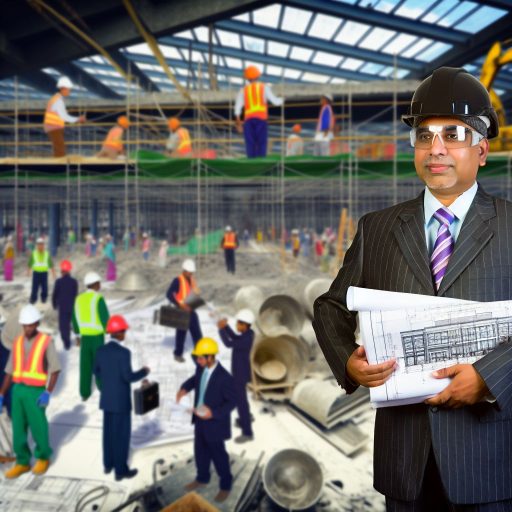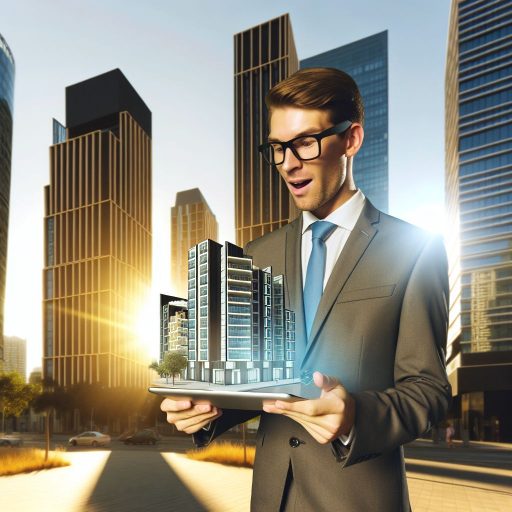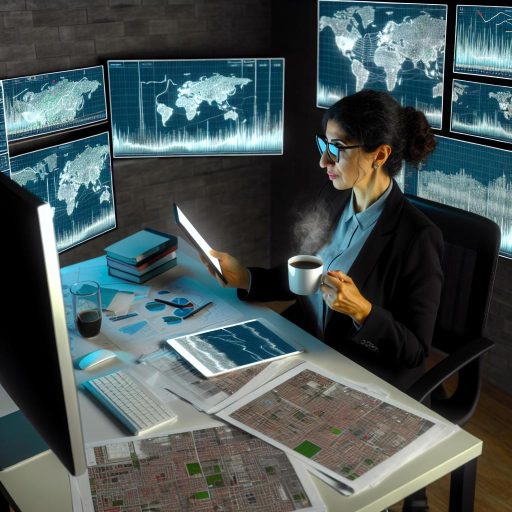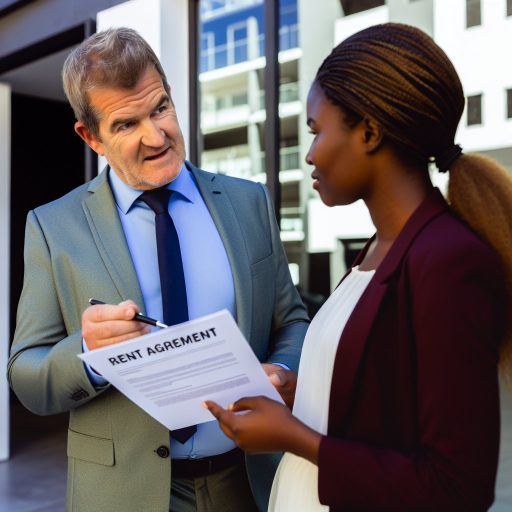Overview of Sustainable Commercial Real Estate
Definitions and Importance
Sustainable commercial real estate refers to buildings designed with environmentally friendly practices.
These practices focus on reducing waste, conserving resources, and minimizing environmental impacts.
Consequently, sustainable real estate supports a healthier planet for future generations.
This concept encompasses energy-efficient designs, renewable energy systems, and sustainable materials.
Moreover, it includes water conservation efforts and improved indoor air quality.
Benefits of Sustainable Commercial Real Estate
Sustainable commercial properties offer numerous benefits to owners and communities.
They often yield lower operational costs through energy efficiency.
Consequently, property owners can enjoy reduced utility bills and maintenance costs.
Moreover, such buildings attract environmentally conscious tenants.
This approach enhances tenant satisfaction and retention rates.
Market Trends in Sustainable Real Estate
The demand for sustainable commercial properties has increased in urban areas.
Investors and developers now recognize the potential for higher returns on these properties.
Moreover, many city regulations now incentivize sustainable building practices.
As a result, many new developments prioritize sustainability from the planning stage.
This trend reflects a broader societal shift towards environmental responsibility.
Challenges in Adoption
Despite the benefits, challenges exist in adopting sustainable practices.
High initial costs often deter investors from pursuing sustainable projects.
Additionally, a lack of knowledge about sustainable practices may hinder development.
Furthermore, existing buildings may not easily adapt to sustainable retrofits.
Consequently, collaboration among stakeholders is crucial for overcoming these hurdles.
Current Trends in Urban Development: A Focus on Sustainability
Integrating Green Spaces
Urban developers increasingly incorporate green spaces into designs.
This trend enhances air quality and promotes biodiversity.
Additionally, these spaces improve residents’ mental health.
Communities benefit from parks, gardens, and open areas.
Properties near green spaces tend to have higher values.
Energy Efficiency Innovations
Energy-efficient buildings are becoming standard in urban areas.
New technologies optimize energy consumption significantly.
Smart systems regulate lighting, heating, and cooling automatically.
Furthermore, solar panels are common in modern developments.
These features reduce utility costs for occupants.
Sustainable Materials Usage
Builders increasingly use sustainable materials in construction.
Recycled and eco-friendly materials are popular choices.
These materials reduce environmental impact during construction.
Moreover, they contribute to healthier indoor environments.
Community Engagement in Development
Community involvement shapes urban development plans effectively.
Local voices help identify specific needs of neighborhoods.
Engagement fosters a sense of ownership among residents.
Consequently, developments align closely with community values.
Mixed-Use Developments
Mixed-use developments are gaining traction for sustainability.
These properties combine residential, commercial, and recreational spaces.
They promote walkability and reduce dependency on cars.
Residents enjoy immediate access to amenities, enhancing quality of life.
Adaptive Reuse of Buildings
Developers increasingly repurpose existing structures innovatively.
This practice preserves historical integrity while meeting modern needs.
Adaptive reuse minimizes waste and conserves resources effectively.
Cities benefit from revitalized architecture and added functionality.
Transportation Solutions
Urban planners prioritize sustainable transportation solutions.
Efforts include expanding public transit and cycling paths.
These improvements help reduce carbon emissions substantially.
Moreover, they enhance accessibility and connectivity in cities.
Key Benefits of Sustainable Commercial Real Estate for Cities
Environmental Impact
Sustainable commercial real estate reduces carbon footprints significantly.
It utilizes energy-efficient technologies to minimize waste.
Consequently, this approach leads to cleaner urban air quality.
Furthermore, green buildings often use sustainable materials.
Such practices promote responsible resource consumption.
Economic Advantages
Investing in sustainable properties attracts eco-conscious tenants.
These tenants often show higher retention rates.
Moreover, sustainable buildings typically lower operational costs.
Lower energy consumption leads to reduced utility expenses.
As a result, property owners benefit from improved profit margins.
Social Benefits
Sustainable commercial real estate fosters a better quality of life.
It often creates spaces that promote community engagement.
Additionally, green spaces enhance aesthetics in urban settings.
These developments encourage healthier lifestyles among occupants.
Moreover, they stimulate local economies through new job opportunities.
Regulatory Compliance
Many cities implement strict green building codes.
Utilizing sustainable practices ensures compliance with such regulations.
Thus, businesses can avoid potential fines and penalties.
Furthermore, eco-friendly businesses can take advantage of tax incentives.
Ultimately, adherence to regulations enhances corporate reputation.
Market Demand
Today’s consumers increasingly favor eco-friendly brands.
As a result, businesses with sustainable properties attract more clients.
Additionally, this trend influences investors’ decisions.
Investing in green buildings is becoming a sought-after opportunity.
This demand is likely to grow as environmental awareness rises.
Gain More Insights: Multi-Family Housing Renovation Tips for Increasing Property Value
Government Policies and Regulations Supporting Sustainable Practices
Introduction to Government Initiatives
Governments worldwide increasingly prioritize sustainability in commercial real estate.
These initiatives promote environmentally friendly practices within urban areas.
They aim to reduce carbon footprints and improve the quality of urban life.
Incentives for Sustainable Development
One effective method for promoting sustainability involves financial incentives.
Tax breaks encourage developers to pursue greener building materials.
Grants are available for projects that focus on renewable energy sources.
Furthermore, low-interest loans support eco-friendly construction.
Building Codes and Standards
Building codes play a crucial role in shaping sustainable commercial properties.
Many cities now require energy-efficient designs in new constructions.
Green certifications, such as LEED, are becoming more commonplace in regulations.
These standards ensure that building operations minimize waste and energy usage.
Zoning Laws and Land Use
Zoning laws have adapted to promote sustainable land use practices.
Mixed-use developments encourage walkability and reduce dependence on vehicles.
Urban planners are focusing on the integration of green spaces in developments.
These changes lead to healthier, more vibrant urban environments.
Public-Private Partnerships
Collaborative efforts between government and businesses foster sustainable projects.
Such partnerships can leverage resources for large-scale green initiatives.
These collaborations often lead to innovative solutions for urban sustainability.
Examples include renewable energy installations on commercial properties.
Education and Awareness Campaigns
Governments are investing in campaigns to raise awareness of sustainable practices.
Educational programs inform developers about the benefits of sustainability.
The goal is to create a culture that values eco-friendly business operations.
Informed stakeholders are more likely to prioritize sustainable choices.
Future Trends in Policy
Looking ahead, policies will likely evolve to adapt to changing needs.
Stricter regulations may focus on reducing emissions and enhancing energy efficiency.
Emerging technologies will play a significant role in shaping these policies.
Governments are crucial in driving sustainable practices in commercial real estate.
Find Out More: Multi-Family Housing Market Trends and Investment Opportunities
Innovative Technologies Enhancing Sustainability in Commercial Real Estate
Smart Building Systems
Smart building technologies revolutionize how we manage energy use.
These systems utilize sensors and automation to optimize HVAC performance.
Additionally, they enhance lighting efficiency in office spaces.
For example, IoT devices monitor usage patterns and adjust conditions accordingly.
Renewable Energy Solutions
Integrating renewable energy sources is essential for sustainable commercial real estate.
Solar panels are increasingly common on rooftops in urban areas.
Moreover, some buildings utilize wind turbines to generate power.
These technologies reduce dependence on fossil fuels.
Water Conservation Technologies
Water conservation is a critical aspect of sustainable commercial buildings.
Smart irrigation systems manage water use based on weather conditions.
Rainwater harvesting systems collect and reuse rainwater efficiently.
Moreover, low-flow fixtures significantly reduce water consumption.
Sustainable Construction Materials
Choosing sustainable materials is vital in modern construction practices.
Recycled and reclaimed materials minimize environmental impact during construction.
Additionally, using local materials reduces transportation emissions.
Obviously, environmentally friendly options enhance the building’s sustainability profile.
Green Certifications and Standards
Obtaining green certifications demonstrates a commitment to sustainability.
LEED and BREEAM are popular frameworks guiding sustainable building practices.
These certifications often lead to reduced operating costs and higher property values.
Consequently, many developers prioritize certification during the planning phase.
Learn More: Commercial Real Estate Law for Foreign Investors
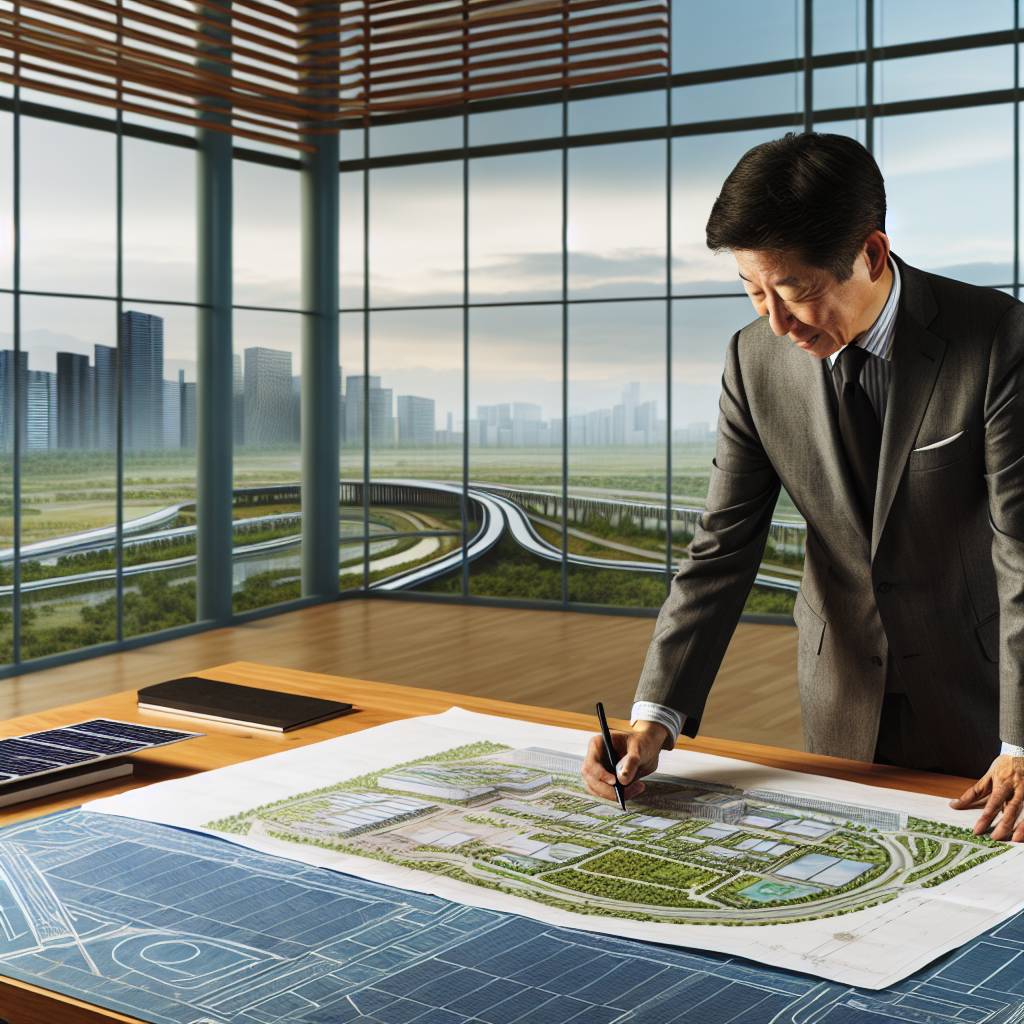
Case Studies: Successful Sustainable Commercial Developments in Urban Areas
Green Building Initiatives
Many urban developers embrace green building initiatives.
These initiatives significantly reduce environmental impacts.
A notable project is The Bullitt Center in Seattle.
This building aims for net-zero energy and water use.
Additionally, it utilizes reclaimed materials and innovative designs.
This project showcases how sustainability can thrive in urban settings.
Urban Vertical Farms
Vertical farms represent an exciting trend in urban agriculture.
One successful example is the Farm.One in New York City.
This operation integrates hydroponics and aquaponics systems.
As a result, it produces fresh herbs and greens year-round.
This model reduces transportation emissions and food waste.
Consequently, it supports local communities and economies.
Adaptive Reuse Projects
Adaptive reuse is transforming old buildings into sustainable spaces.
The High Line in NYC is a prime example of this approach.
This abandoned railway line now serves as an urban park.
It incorporates native plants and green spaces throughout its length.
Moreover, it promotes biodiversity and offers recreational spaces.
Such projects highlight creative solutions for urban redevelopment.
Renewable Energy Integration
Integrating renewable energy is essential for sustainable development.
The EDGE in Amsterdam incorporates solar panels into its design.
This building generates more energy than it consumes.
Additionally, it features energy-efficient technologies throughout.
The successful implementation shows the potential for eco-friendly buildings.
This development sets a benchmark for future projects worldwide.
Smart Infrastructure Solutions
Using smart infrastructure enhances operational efficiency in urban areas.
One example is the Masdar City project in Abu Dhabi.
This sustainable urban development relies on smart technologies.
It promotes energy efficiency and sustainable transportation methods.
Furthermore, it includes electric public transportation systems.
Such innovations pave the way for future urban developments.
You Might Also Like: Commercial Real Estate Local SEO Strategies for Targeted Lead Generation
Challenges and Barriers to Implementing Sustainable Practices
Financial Constraints
Implementing sustainable practices often comes with high initial costs.
Many urban developers face tight budgets and limited financial resources.
Investors may hesitate to fund projects with uncertain returns.
Furthermore, traditional financing methods may not support eco-friendly initiatives.
Regulatory Hurdles
Complex zoning laws can complicate sustainable development.
Regulatory requirements often favor conventional construction methods.
Additionally, obtaining necessary permits may be a lengthy process.
This results in delays and increased costs for sustainable projects.
Lack of Awareness and Education
Many stakeholders remain unaware of the benefits of sustainable practices.
For instance, developers might prioritize profit over eco-friendly solutions.
Moreover, insufficient education on green building technologies exists.
This lack of knowledge can hinder progress in the commercial real estate sector.
Market Demand and Consumer Preferences
Consumer demand for sustainable properties is still evolving.
Many potential tenants prioritize location and price over sustainability features.
This discrepancy can limit the financial viability of green projects.
Consequently, developers may be reluctant to invest in sustainable options.
Technical Challenges and Infrastructure Limitations
Urban areas may lack the necessary infrastructure for sustainable practices.
For example, existing buildings may require costly retrofitting for green technologies.
Furthermore, reliable access to renewable energy sources remains a challenge.
These technical barriers can impede the implementation of innovative solutions.
Resistance to Change
Many industry professionals resist changing traditional building methods.
This resistance often stems from familiarity with conventional practices.
Additionally, fear of the unknown can impede progress towards sustainability.
Addressing this mindset is essential for fostering innovation in real estate.
Future Prospects: Predictions for Sustainable Commercial Real Estate by 2030
Growth in Green Certifications
By 2030, green building certifications will become the norm.
Many cities will require sustainable building practices for new constructions.
Architects will prioritize energy-efficient designs to gain certifications.
Businesses will seek buildings with these certifications to enhance brand image.
Integration of Smart Technologies
Smart technologies will revolutionize the way buildings operate.
Energy management systems will monitor usage in real time.
Facilities will optimize energy consumption automatically.
This integration will boost operational efficiency and reduce costs.
Urban Green Spaces
Urban areas will invest heavily in green spaces by 2030.
These spaces will improve air quality and enhance biodiversity.
Developers will incorporate parks and gardens in commercial projects.
Green roofs will become common in urban commercial buildings.
Increased Focus on Community Impact
Sustainable commercial real estate will prioritize community well-being.
Developers will engage with local residents during planning phases.
Community feedback will shape design and functionality of spaces.
This approach will strengthen community ties and promote inclusivity.
Economic Incentives for Sustainable Development
Governments will provide more financial incentives for sustainable projects.
Tax rebates and grants will encourage eco-friendly building practices.
Investors will recognize the long-term benefits of sustainability.
As a result, the market for sustainable commercial real estate will grow.
Transition to Circular Economy Models
By 2030, circular economy principles will influence real estate development.
Developers will focus on materials that can be reused or recycled.
This shift will minimize waste and reduce environmental impact.
Building materials will come from sustainable sources, promoting responsible consumption.
Additional Resources
The future of commercial real estate is sustainable: Reflections on …

